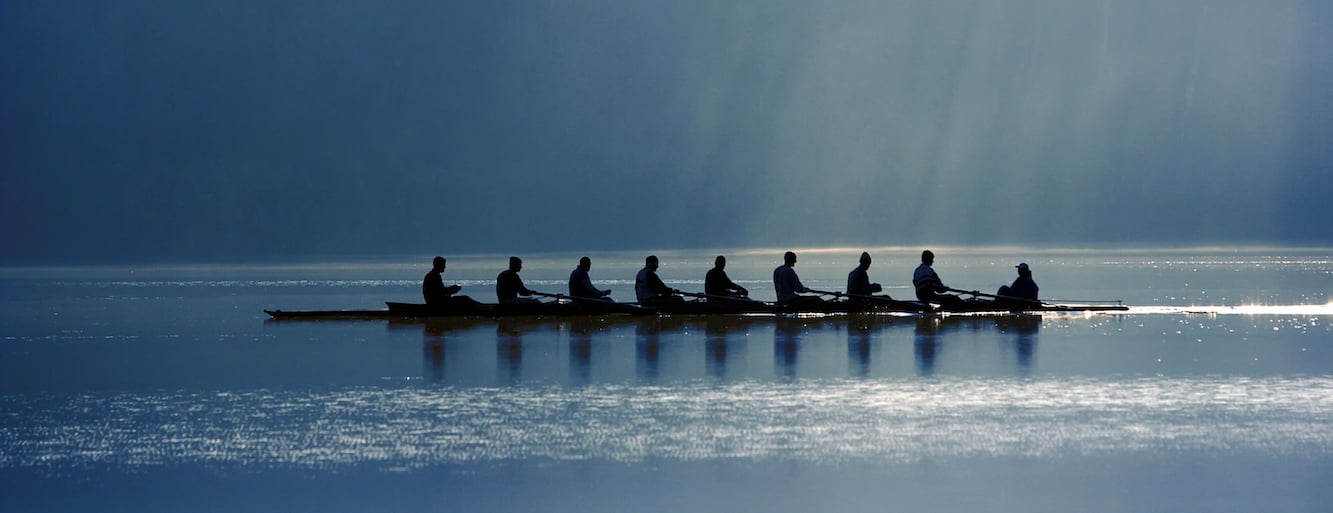Boating Sports: An Intro To The World Of Rowing Crew
In the world of water sports, crew can refer to the sport of rowing or a rowing team that engages in the sport. Rowing is a popular sport for athletes of all ages, beginning with young teenagers and continuing into adulthood. At the high school and collegiate level, rowing can be quite competitive. Both men and women can excel at the sport of rowing; it’s also a vigorous water activity that will challenge anyone.
Overview of Rowing
Rowing involves propelling boats through the water using oars. Contrasting rowing to standard boating with a rowboat, rowing involves a rower sitting on a seat in the rowing shell while moving forward and backward with each stroke. The oars push the water to the front, which causes the rowing shell to move. Rowers will use a combination of two strokes, known as sweeping and sculling. Sweep rowing involves each rower holding one oar in both hands, working with up to eight rowers in total. Sculling involves each rower holding an oar in each hand, possibly working alone or with a team of four rowers.
The History of Crew
Rowing is an old sport that originated as a means of transportation, a necessity, rather than a competition. Centuries ago, people were forced to navigate the water in vessels to get from place to place. People also rowed as they engaged in warfare. During the 1700s, people began racing competitively on the water, trying to beat barges that traveled down the River Thames in England. In 1829, the Oxford-Cambridge race was created, and 10 years later, the Henley Royal Regatta was born. Rowing in the United States dates back to 1852 with the Yale-Harvard race that took place on the Charles River. Rowing was also the first official organized collegiate sport in the United States.
Crew Boats and Equipment
Crew boats are often referred to as shells, and they are long and narrow. Different rowing classes have specific minimum weights for the shells to ensure that each team has the same advantages. Shells are also made for a specific number of rowers and according to the position of coxswain or the rower who is in charge of steering and navigating the shell. Sculling and sweeping shells are similar, but sculling shells are often lighter. Some shells have rudders for steering, operated by the coxswain. Steering can also happen as the scullers exert more power on one side of the shell. Rowers typically call the oars “blades” or “sculls,” depending on the type of rowing. State-of-the-art blades and sculls are usually made out of carbon fiber. From a distance, it is often possible to identify a crew club by the colors painted on the blades or sculls.
Famous Crew Races
In the United States, crew races are called regattas. Head races happen in the autumn, and sprint races are held in the spring and summer in the United States. In the UK, only multi-lane races are called regattas. The standard Olympics crew race length is two kilometers, but other race distances can vary. The International Federation of Rowing Associations is the governing body for rowing. Under this entity, the World Rowing Championships occur annually, involving 22 boat classes.
Crew Teams
For multi-rower shells, the rowers are numbered sequentially beginning at the bow aft. The first rower is called the bowman, and the rower nearest to the stem is the strokeman. Other team members may have other names depending on their responsibilities. The coxswain is the rower sitting facing the bow, responsible for steering and coordinating the rhythm of all the rowers. Often, the coxswain is light in weight, because this makes it easier for the team to propel the boat. Crew teams will be divided into different weight classes to ensure that all teams competing against each other are of similar weights.
- The History of Rowing
- History of Crew
- Rowing Equipment and History
- Rowing Quick Facts
- Crew Rules
- Rules of Crew
- Rowing Rules
- Rules of Racing (PDF)
- Basic Rowing Equipment
- Rowing 101
- Rowing Equipment
- Rowing in Depth
- What is Rowing?
- Introduction to Rowing
- Learn to Row (PDF)
- Crew – Rowing
- Introduction to Rowing (PDF)
- An Introduction to Rowing and Crew
- Introduction to Crew (PDF)
- Learn to Row
- What is Crew?
- Rowing Terminology
- About Rowing
- Charters and Fishing Boats
- What is Rowing/Crew?
- Rowing 101
- Learn to Row (PDF)
- 300 Years of Rowing on the Thames
- The History of Rowing
- What is Crew?

